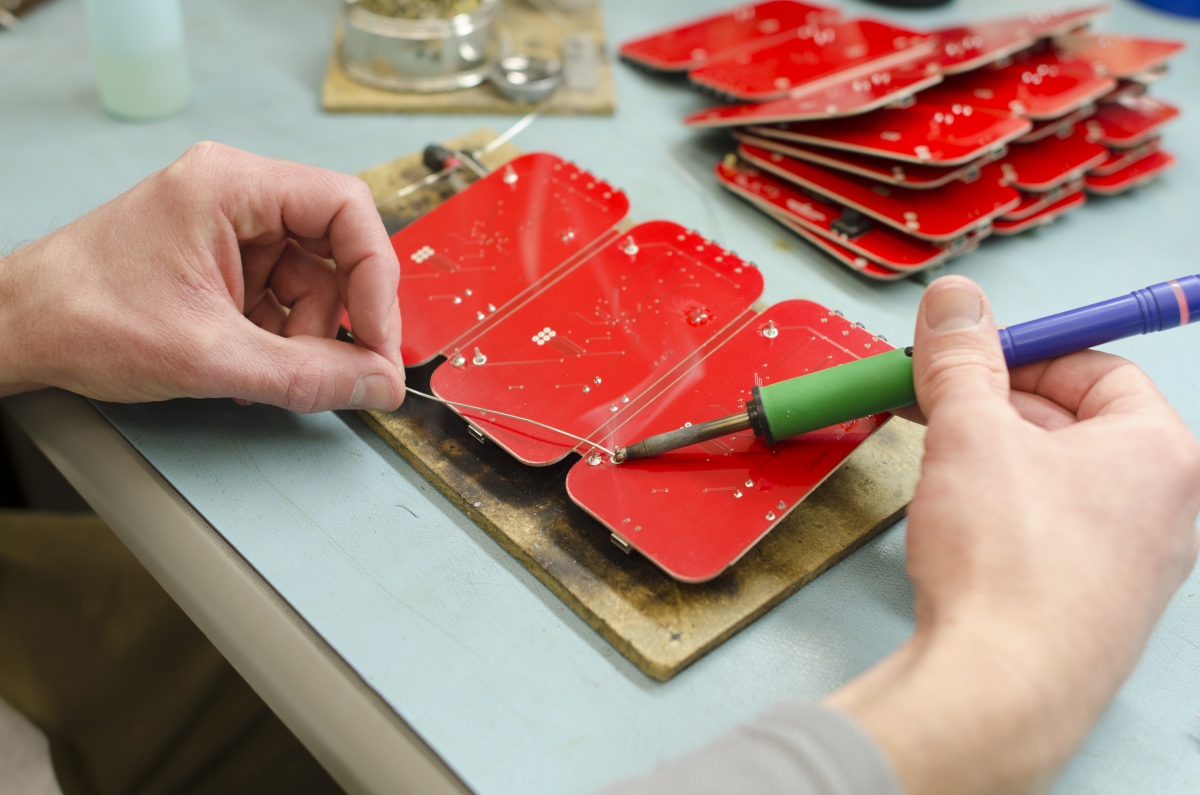 |
| from DaveBurgess.com |
It inspired me to sail the ship of my classes further into 21st century learning.
At the end of every semester I do a report card for myself where students are asked to anonymously rate the class and answer some very specific questions about both my pedagogy and about the creative decisions that went into the course they just participated in.
Today I want to do a quick review of the first of those surveys and what I will do doing to enhance my courses for next semester.
Robotics Introduction
This course was taught differently for me this year as I went from a cap of 28 students to an actual list of 38. We were committed to covering the following topics.
Electrical Theory, Safety, and Soldering
Basic Electropneumatics (FESTO trainers)
CAD Basics (AutoCAD)
Coding Basics (with Arduino)
Robotics (With custom Arduino robots)
The first four modules were covered using a station-rotation method where students spent two and a half weeks at a station before shuttling to the next one.
In my opinion, this method was good given the challenging situation of 38 students in the room. It could be improved for next semester by reducing the rotation to two groups and having students partner up. This came through strongly in the survey where student told me they wanted to work with partners to help them understand the ideas. I agree with this completely and will be implementing it next semester.
Electrical Theory, Safety, Soldering
 |
| from learn.sparkfun.com |
I believe that this unit worked well overall as the hands-on assignments were effectively completed Unfortunately, there was a severe lack of devotion to the theory piece of this module which will need to be rectified in the future.
The student response mirrored this and one student requested that a booklet that followed the concepts with more hands-on tutorials would be more beneficial. It will be added for next semester.
One of the interesting pieces I find with anonymous surveys, in addition to students telling you to "quit teaching and find a new career" occasionally, is that some students have a sense of humor. This time around I got a fairly significant passage from Fifty Shades of Grey...charming.
Takeaway - Tutorials activities that better frame the electrical theory.
Basic Electropneumatics
 |
| from festo-didactic.com |
I re-wrote the theory booklet over the summer and teach the module using it now.
It lays our part theory and then demonstration circuits to show how to make them work.(much like Electrical theory will soon have)
The module has five sections and students are graded on how much of the booklet they can complete during the semester(usually about 10% of students complete the whole set of five while most of the class gets four done.(worth 80-90% on our somewhat archaic grading system).
Interestingly the students found this unit both challenging and fulfilling. They suggested minor edits to some activities, but no major structural problems.
Takeaway - Using Project learning and modern blending strategies works.
CAD Basics
 |
| from AutoDesk.com |
This module is based on learning CAD concepts to recreate a series of 2D drawings that use those concepts.
Unfortunately, AutoCAD is not intuitive and so many students struggled. One student did suggest the solution during the unit, not on the report card. She said that we should be working on a real-world project. I want to improve this module further by making it real world and integrated as a unit.
Takeaways - Revamped unit with renewed focus on drawing real-world objects(also how to sue measuring devices) and an overarching purpose for the unit. Design multiple parts for the same object.
Coding Basics
Personally, I consider this module to be the low-point of the semester for me pedagogically, as my learning resources fell flat for this group.
I've been fighting with how to most effectively teach
 |
| from Instructables.com |
I hated how this unit went so much that I started from scratch and did it again later in the semester.
For the second attempt, we did a major project where students created a blinking lights game.
The game made them create an Arduino controlled solder-board with a blinking LED game.
A great rundown of the game can be found here, though I didn't give the students the code, I made the write it(and understand why they were doing what they were doing.)
I will place a rundown of that project on this blog in the future.
After the second attempt, the feedback from the students was incredibly positive. We will be doing this again.
Takeaways - Guiding final project + process-focused lessons = success
Robotics Competition
For the final competition we will be doing a balloon battle. You've already seen the prototyping of this project on this blog and a summary post will follow shortly after the competition on Friday.
Thanks for reading.
The "Pirate" Way

